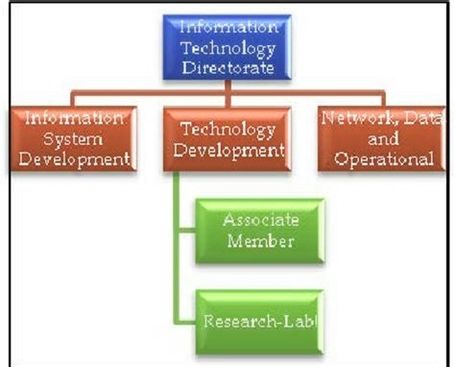
The structure of an Information Technology (IT) directorate can vary depending on the organization and its specific needs. There are several common models that organizations use to structure their IT departments. Two common models are the functional organizational model and the matrix organizational model.
In a functional organizational model, the IT team is organized into units based on their function. This means that employees with related areas of expertise, such as networking, software development, infrastructure, and support, are grouped together in the same subdepartments. The functional model typically has a clear chain of command and focuses on projects.
On the other hand, the matrix organizational model does not follow a traditional hierarchy. Instead, each team member reports to multiple leaders. This can promote innovation but is inherently more complicated.
When structuring an IT department, there are several factors to consider, such as whether to have an in-house team or outsource IT services, the size of the business, and the organizational goals. For example, smaller businesses may prefer to outsource IT services for cost-effectiveness, while larger teams are often organized around functions. The specific roles and functions within an IT department can vary widely depending on the organization’s needs.
Here are some common roles you may find in an IT department:
– Chief Information Officer (CIO)
– IT Director
– Chief Technology Officer (CTO)
– Chief Information Security Officer (CISO)
Please note that these models and roles are not exhaustive and may vary depending on the organization’s structure and requirements.
